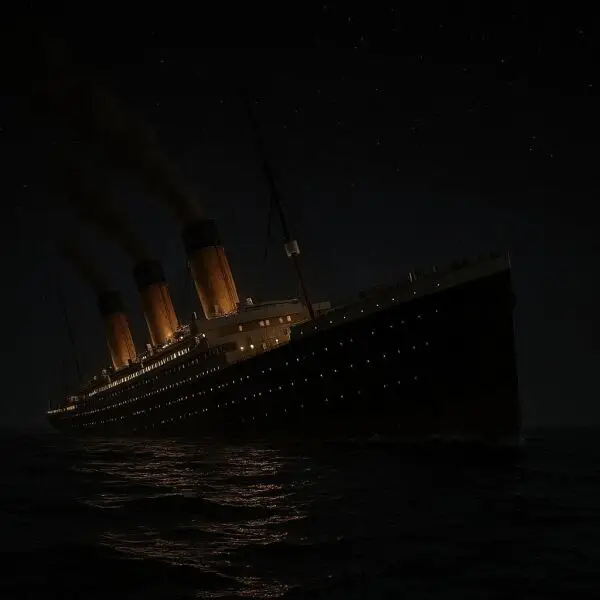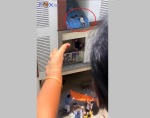Did you know that a novel predicted the sinking of the Titanic 14 years earlier?
The novel that predicted the Titanic 14 years earlier: in 1898, Futility narrated the sinking of the ocean liner Titan after colliding with an iceberg....
Table of Contents
- The book that “told” the shipwreck before the shipwreck
- Titan vs Titanic: similarities that give you chills 🧊🚢
- Prediction or good sailor’s instinct?
- The visionary, his other hunches and coincidences that make you think
Follow Patricia Alegsa on Pinterest!
The book that “told” the shipwreck before the shipwreck
A sailor with a sharp pen wrote in 1898 a story that sounded like a cruel joke of fate. Morgan Robertson, seasoned in the merchant navy since he was fifteen, titled his short novel with bitter irony: Futility, or the Wreck of the Titan. Futility, no less. And yes, you can imagine the rest.
The plot: a gigantic ocean liner, the Titan, collides with an iceberg in the North Atlantic and sinks. Pitch dark night, icy water, insufficient lifeboats. When it came out, the book passed almost unnoticed through bookstores. Years later, on April 14-15, 1912, the Titanic repeated the script in real life. Then someone shouted: wait, I’ve read this before. Boom, reissue and posthumous fame for Robertson 📚
The author did not improvise. He was born in Oswego, New York, in 1861, son of a Great Lakes captain. He sailed for more than two decades, reached first officer, then studied jewelry at Cooper Union, damaged his eyesight with diamonds and chemicals, and turned to writing. He published in McClure’s and the Saturday Evening Post. He wasn’t a drawing-room genius, but he saw the sea with radar eyes.
Titan vs Titanic: similarities that give you chills 🧊🚢
I usually distrust “perfect prophecies.” But here the coincidences don’t ask permission; they bang on the table. Look:
- Both giants were presented as almost unsinkable. Pride at full throttle.
- Both sailed fast on their maiden voyage. Bad timing for rushing.
- Impact with iceberg in the North Atlantic, near Newfoundland, in April.
- Three propellers, two masts, and four funnels. On the Titanic, one was decorative. Pure marketing.
- Huge capacity, obscene luxury and… few lifeboats.
- Cruel numbers: in the novel about 3,000 people traveled and 13 survived. On the Titanic there were 2,224 and 706 were saved.
The accuracy didn’t come from a crystal ball. It came from the absurd regulations of the time: rules counted lifeboats by tonnage, not by people on board. The outcome was predictable. Robertson lived it, wrote it and, unfortunately, reality copied it.
A fact that haunts me: both sea monsters raced at full speed in waters with reported ice. Ego also makes the hull creak.
Read this other article: The story of the deadliest natural disaster in history
Prediction or good sailor’s instinct?
I propose an honest game: take away the word “prophecy” and replace it with “diagnosis.” Robertson knew the North Atlantic, the ice corridors and the psychology of shipping companies competing for speed and luxury. If you cross those variables, disaster stops looking like magic and appears as a poorly solved equation.
Still, the chill doesn’t go away. After the Titanic, the world corrected late but corrected nonetheless. Rules were born that still live today:
- SOLAS Convention of 1914: enough lifeboats for everyone, drills, emergency lighting.
- 24-hour radio watch. The Titanic had exhausted telegraph operators and commercial priorities.
- International Ice Patrol: ice monitoring with almost obsessive rigor.
I touched those ghosts in a floating museum. I boarded the Queen Mary in Long Beach and stayed staring at the watertight bulkheads. I thought about the metallic clack of a gate closing. I thought about the word “unsinkable” and how water doesn’t know slogans. I left with the feeling that engineering saves lives, but arrogance pushes.
The visionary, his other hunches and coincidences that make you think
Robertson kept writing and dabbled in inventions. In 1905 he published The Submarine Destroyer, where he uses a functional periscope. He tried to patent it. There were previous models, but he adjusted the design and registered variants. He had his internal radar on.
In 1914 he expanded his book about the Titan and included another story, Beyond the Spectrum. There he imagined a conflict between Japan and the United States with a surprise attack, aviation on a Sunday, and routes toward Hawaii and the Philippines. Pearl Harbor happened in 1941. That calls for a long silence.
He closes the curtain with a strong image. In 1915 Robertson was found dead in a hotel in Atlantic City. Windows open. Facing the sea. He was 53. He was using treatments with mercury compounds for thyroid and pain. Officially, his heart gave out. Poetic and brutal.
And before we say goodbye, another literary nod to the sinister:
- Edgar Allan Poe wrote in 1838 a novel with shipwreck survivors who eat a cabin boy named Richard Parker.
- In 1884, a real shipwreck ended in cannibalism. The victim was named… Richard Parker.
- If reality could read, it would underline.
It is also true that early 20th-century rivalry pushed ships to measure themselves like gladiators: Cunard launched Mauretania and Lusitania, the latter torpedoed in 1915; White Star responded with Olympic, Titanic and Britannic, which exploded from a mine in the Great War. When the sea referees, the scoreboard fills with crosses.
So, prophet or journalist of the future? I stick with this idea: Robertson didn’t guess Titanic’s fate; he recognized it before it happened. If you know ice, smell vanity and see a giant running blindly, you don’t need magic. You need courage to write it down and for someone to read you in time 🛟
Did you want more? Look for an edition of Futility. Read it at night. And tell me if you don’t hear, between the lines, the creak of a hull begging someone to finally slow down.
Subscribe to the free weekly horoscope
Aquarius Aries Cancer Capricorn Gemini Leo Libra Pisces Sagittarius Scorpio Taurus Virgo
I am Patricia Alegsa
I have been writing horoscope and self-help articles professionally for over 20 years.
Subscribe to the free weekly horoscope
Receive weekly in your email the horoscope and our new articles on love, family, work, dreams and more news. We do NOT send spam.
Astral and numerological analysis
-
 Discover your future, secret personality traits and how to improve in love, business and life in general
Discover your future, secret personality traits and how to improve in love, business and life in general
-
 Online Dream Interpreter: with artificial intelligence
Do you want to know what a dream you had means? Discover the power of understanding your dreams with our advanced online dream interpreter using artificial intelligence that responds to you in seconds.
Online Dream Interpreter: with artificial intelligence
Do you want to know what a dream you had means? Discover the power of understanding your dreams with our advanced online dream interpreter using artificial intelligence that responds to you in seconds.

















